Center for Immunotherapeutic Transport Oncophysics
Studying the impact of transport phenomena on immunotherapeutic efficacy (and therapeutic resistance) in breast and pancreatic cancers as those are cancer types with significant clinical challenges. We seek to understanding transport limitations of immune cells and immunotherapeutics, establishing a precision immunotherapeutics framework on the basis of transport oncophysics, and exploiting oncophysical transport-based cues for the development of successful personalized immunotherapeutics strategies based on transport phenotypes.
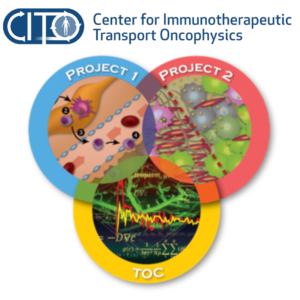
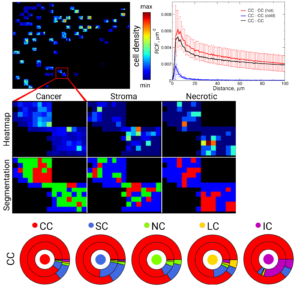
Quantitative cell organization analysis in tissues
Development of a new algorithm for digital pathology to study spatial cell organization in tissue biopsies in clinical and preclinical studies. The new tools allows to quantitatively characterize how different cell types are interacting spatially in tissue and use that information as surrogate markers. This methodology also enables to perform automatic tissue segmentation into “hot” and “cold” areas based on local densities (e.g. CD8+), and characterize those segments individually statistically. To advance tissue analysis further, this approach can be merged with machine learning in image analysis.
New method for 3D tissue imaging analysis
Development of a new algorithm to transform the sequential stack of multiplex stained tissues into a 3D data set in a similar fashion to MRI or CT. The method allows to study tissue features, their spatial correlations, and important statistics unseen in casual 2D tissues images.
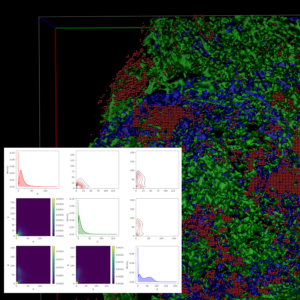
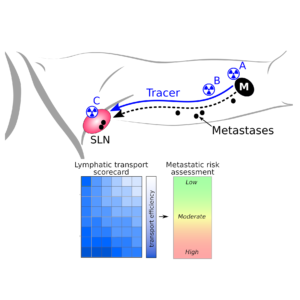
Intraoperative diagnostics of metastatic potential in melanoma
Staging and treatment for patients without clinical evidence of metastatic melanoma is excision of the primary tumor and sentinel lymph node biopsy (SLNB). However, false negatives provide inaccurate prognostic information and delay adjuvant therapy, ultimately causing decreased survival. Thus, we work on the development of a more accurate method of predicting the metastatic potential of melanoma than sentinel lymph node biopsy that can be applied during routine surgeries.
Drug delivery and heterogeneity
Therapeutic efficacy hinges on efficient drug permeation into the tumor microenvironment, which is known to be heterogeneous thus potentially making drug permeation heterogeneous as well. However, drug delivery to metastases and the heterogeneity of drug delivery are poorly understood. Based on growing evidence that the tumor microenvironment can affect drug transport, we study drug transport properties in metastases in order to understand the transport-based therapeutic resistance.
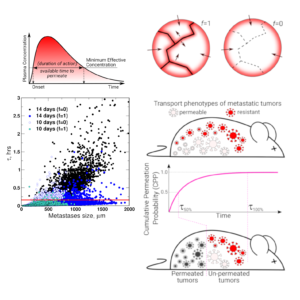
Research interests:
-
Transport-based therapeutic resistance
-
Intratumoral pharmacokinetics in metastases
-
Immune cell infiltration and immunotherapies
-
Process analysis and optimization
-
Predictive surrogate markers for efficacy
Methods:
-
Custom developed tools and algorithms
-
Statistical analysis
-
Biodistribution and transport models
-
Imaging analysis
-
Machine learning tools
-
In vitro, in vivo, and clinical sample analysis
-
Process and experiment design
